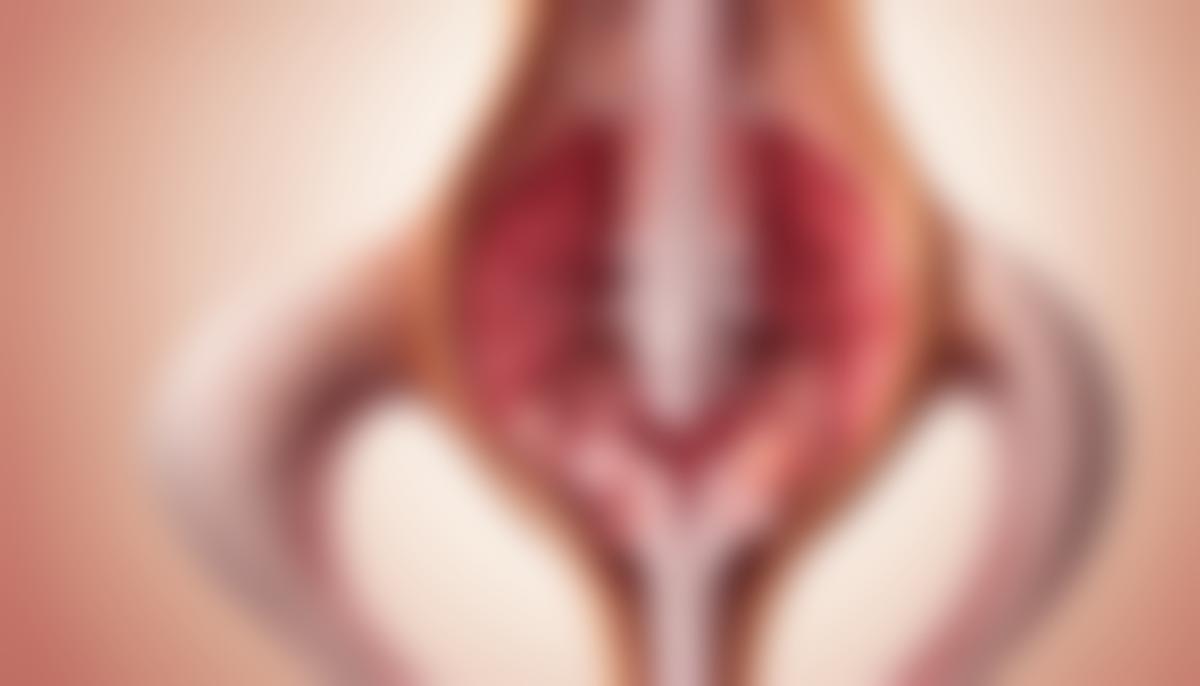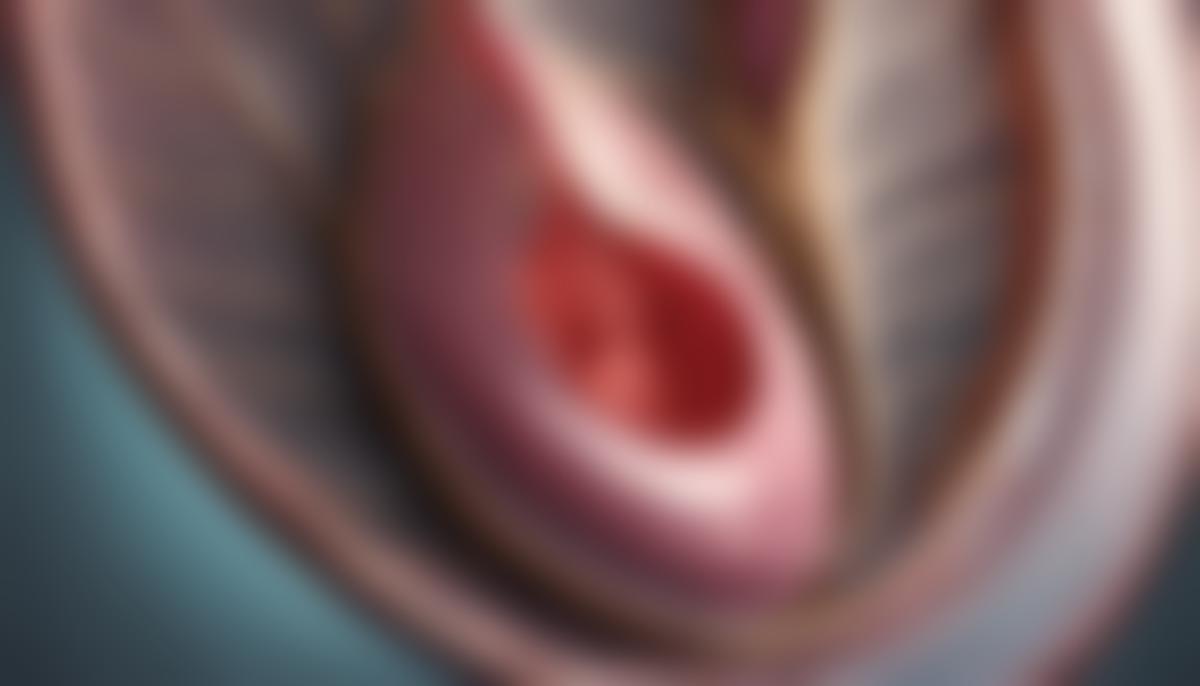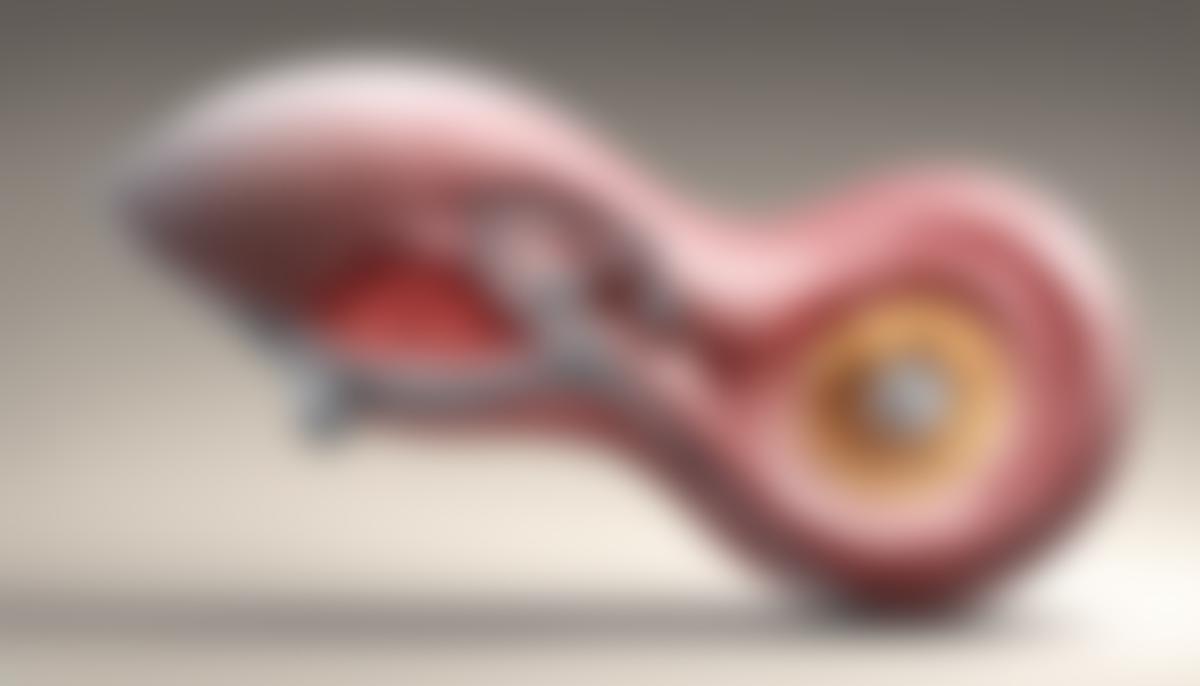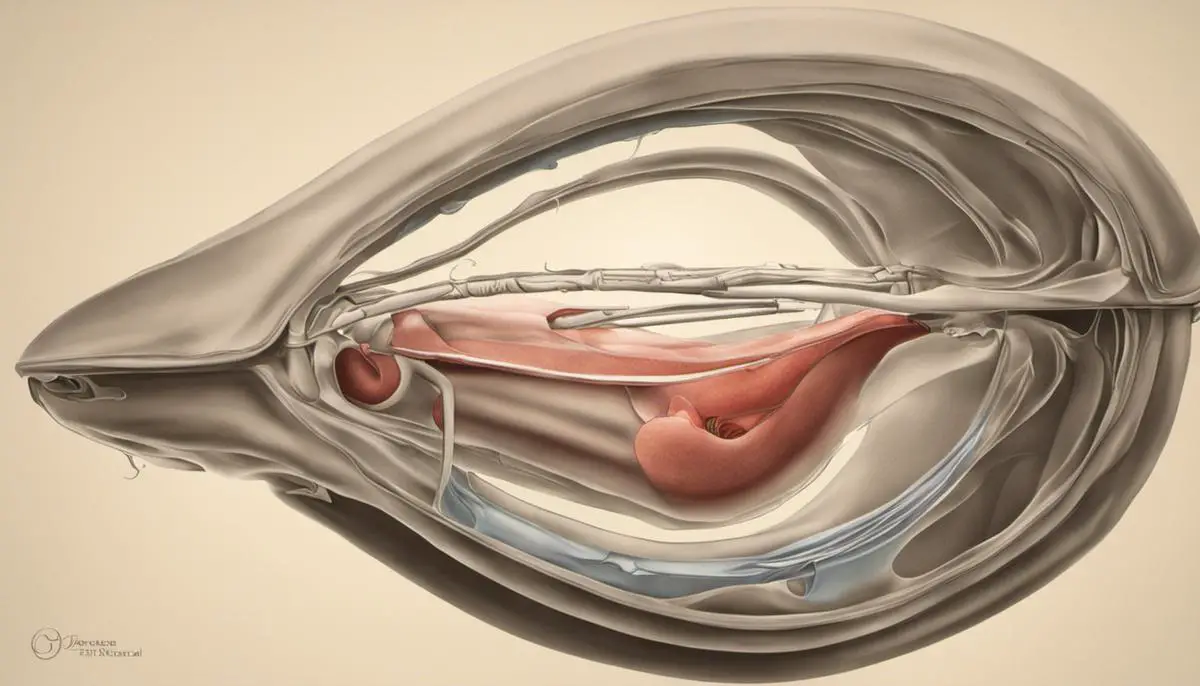A retroverted uterus, a condition where the uterus tilts backwards towards the spine, is a characteristic that is naturally present in approximately 20% of women. Understanding this common anatomical variance is critical to empowering women in making informed decisions about their health and pregnancies. This knowledge can also offer reassurance by providing clarity about potential impacts on fertility and pregnancy. With a focus on early pregnancy, this comprehensive exploration offers a clear understanding of a retroverted uterus, possible complications, and management strategies during pregnancy. From the explanation of medical interventions to expert insights from practicing Gynecologists, this discourse aims to enlighten and support women who either have a retroverted uterus or simply wish to extend their comprehension in women’s health.
Understanding a Retroverted Uterus
Understanding a Retroverted Uterus
A retroverted uterus, also often referred to as a tilted or tipped uterus, is defined by the orientation of the uterus in relation to the pelvis. In contrast to the more common anteroverted uterus, which tilts forward towards the bladder, a retroverted uterus tilts backwards towards the spine. It’s important to note that all these anatomical variations are anatomically normal and can be found in about 20% to 30% of women.
Causes of a Retroverted Uterus
There are few potential causes for a woman to have a retroverted uterus. For some women, it’s a genetic characteristic inherited at birth. In other cases, a retroverted uterus can be the result of a medical condition or event such as endometriosis, pelvic inflammatory disease (PID), or uterine fibroids, which may alter the position of the uterus.
Effects on Health and Fertility
Though a retroverted uterus in itself does not typically negatively impact a woman’s overall health or fertility, it may cause specific symptoms or problems that could demand medical attention. These conditions could include discomfort during intercourse, urinary problems, lower back pain, or increased risk of trapped tampons. Some women report more difficulty with inserting tampons or menstrual cups due to the position of their uterus.
Diagnosis and Early Pregnancy Implications
A retroverted uterus is typically identified during a routine pelvic examination. However, in the presence of fibroids or endometriosis, an ultrasound may be necessary for confirmation.
In regards to early pregnancy, a retroverted uterus does not usually interfere with the development of the baby, and as the pregnancy progresses, the weight of the growing uterus typically causes it to move into a more forward position. However, in some rare cases, a retroverted uterus might cause a condition called uterine incarceration where the uterus becomes stuck in the pelvis. This condition usually corrects itself, but if it doesn’t, medical intervention may be necessary.
Managing a Retroverted Uterus in Early Pregnancy
During early pregnancy, management of a retroverted uterus mostly involves monitoring and managing any symptoms or complications that may arise. As an expectant mother, it is essential to stay in regular communication with healthcare professionals. Your healthcare provider can guide you on any necessary routine medical check-ups, discuss symptoms, suggest comfort measures and provide essential information on maintaining overall health and well being during the course of the pregnancy.
It’s also crucial to report any severe pain, heavy bleeding, or other concerning symptoms to your healthcare provider right away. These symptoms might suggest complications such as a miscarriage or ectopic pregnancy, which require immediate medical attention.
When a retroverted uterus is present as a result of fibroids or endometriosis, healthcare professionals often recommend treating these underlying conditions in order to alleviate any associated discomfort or symptoms. The scope of these treatments spans a large range, from medications to surgical procedures, and often rely on factors like the size and location of the fibroids or the intensity of the endometriosis.

Retroverted Uterus and Early Pregnancy
Decoding the Retroverted Uterus
A retroverted uterus, alternatively referred to as a tilted or tipped uterus, is a physiological deviation wherein the uterus leans backward towards the rectum, instead of forward towards the belly button. This variance is not only completely normal, but is also prevalent in about 20-30% of women. Mostly a genetic trait, the orientation of the uterus is beyond one’s control or capability to modify.
The Impact of a Retroverted Uterus on Early Pregnancy
Typically, a retroverted uterus doesn’t impact the early stages of pregnancy and many women with a retroverted uterus experience a healthy, complication-free pregnancy. However, a small number of women might experience difficulties during the first trimester due to their retroverted uterus. This might include discomfort during sexual intercourse, difficulty with urination, and lower back pain.
Symptoms Associated with Retroverted Uterus in Early Pregnancy
The most common symptom of a retroverted uterus in early pregnancy is usually mild discomfort or pain in the lower back, abdomen, or during sex. In some cases, pregnant women may also face problems emptying the bladder fully. Although these symptoms can be concerning, they are usually not harmful and often disappear on their own as the pregnancy progresses and the growing uterus moves into a more vertical position.
Potential Complications
A retroverted uterus can sometimes cause complications. The most common of these is “incarceration of the uterus,” when the uterus becomes trapped in the pelvic bone. It is a rare but serious condition that can cause pain and urinary retention. Most complications occur in the second trimester and beyond, but if the uterus does not correctly position itself in the second trimester, medical intervention (such as manual repositioning) might be necessary.
Risks of Miscarriage
There is currently no clear evidence to suggest a retroverted uterus can increase the risk of miscarriage in the early stages of pregnancy. A retroverted uterus does not typically affect fertility or the development of the fetus in the womb. However, because every pregnancy is unique, there might be other underlying conditions affecting the health of the pregnancy.
Dealing with a Retroverted Uterus During Early Pregnancy
Regular monitoring by a healthcare professional is the most effective approach when dealing with a retroverted uterus during early stages of pregnancy. If you are pregnant and have previously been diagnosed with a retroverted uterus, your doctor will engage closely with you to assess all potential symptoms and establish a personalized management plan. This might consist of prescribed pelvic exercises to alleviate discomfort or strategies to manage potential urinary retention.
Bear in mind that pregnancy with a retroverted uterus typically progresses much like any other pregnancy. In most cases, as the baby grows, the uterus will self-adjust its position. Nonetheless, all pregnant women, those with a known retroverted uterus in particular, are strongly recommended to seek regular prenatal care and consistently communicate any concerns or symptoms to their healthcare provider.

Photo by gmalhotra on Unsplash
Managing a retroverted uterus during pregnancy
Familiarizing Yourself with a Retroverted Uterus
Often referred to as a tilted or tipped uterus, a retroverted uterus represents a natural variation in the uterus’s position that impacts roughly 20% of women. It leans backwards towards the spine instead of extending straight up. It’s crucial to understand that a retroverted uterus is not considered a medical condition. It typically does not affect fertility and generally poses no threat to a healthy pregnancy or childbirth. However, during the initial stages of pregnancy, some women may experience discomfort due to ‘incarceration’, a situation where the expanding uterus becomes entrapped in the pelvic cavity.
Medical Interventions
If a retroverted uterus becomes incarcerated, medical intervention might be necessary to gently reposition it. This is typically done manually during a pelvic examination and can alleviate discomfort. Incarceration of the uterus is rare but if left untreated, it can lead to complications such as miscarriage or premature labor. Therefore, it is essential for women with a known retroverted uterus to maintain regular prenatal checkups, particularly in the second trimester when the uterus undergoes significant growth.
In addition, some health care providers may recommend the use of a pessary, a small silicone device placed in the vagina to help support the uterus. However, the usage of a pessary is typically decided on a case-by-case basis and isn’t a common practice for managing a retroverted uterus.
Non-Pharmacological Treatments
Non-pharmacological treatments for a retroverted uterus primarily involve exercises and positions that can encourage the uterus to shift position naturally. Kneeling and leaning forward, for example, can provide relief from pain and pressure. Similarly, pelvic rocking exercises, which involve rocking the pelvis back and forth while on all fours, can help move the uterus forward. To ensure these exercises are performed safely and effectively, it is recommended to do them under the guidance of a physical therapist or other health care professional.
When is treatment necessary?
In most cases, a retroverted uterus corrects itself by the second trimester as the uterus grows out of the pelvic cavity and into the abdominal cavity, a process known as “uterine liberation.” Treatment is generally only necessary if the woman experiences persistent discomfort, if the uterus becomes incarcerated, or if there are concerns about the effect of the uterus’s position on the developing fetus.
Conclusion
It’s important to understand that a majority of women with a retroverted uterus experience normal pregnancies and give births successfully. By following the regular prenatal regimen and implementing certain interventions and exercises when required, these women can manage a healthy and smooth pregnancy journey, despite having a retroverted uterus.

Gynecologist insights on Retroverted Uterus and Pregnancy
Retroverted Uterus Unraveled
To delve deeper, a retroverted uterus, alternatively known as a tilted or tipped uterus, is a condition in which the uterus leans backward at the cervix as opposed to the forward tilt present in most women. This condition manifests in nearly 20% of women and usually does not hinder their ability to conceive or bear a child. So, if you are pregnant and have been diagnosed with a retroverted uterus, rest assured that it should not pose significant risks to the health or progression of your pregnancy.
Routine Check-ups During Early Pregnancy
Regardless of whether a woman has a retroverted uterus, regular check-ups during pregnancy are important to monitor the health of both the mother and the fetus. However, for those with a retroverted uterus, the frequency of appointments may be increased especially during the first trimester depending on other health factors and your doctor’s recommendations.
These check-ups generally involve a pelvic exam, ultrasound, blood tests, and urine tests to monitor the fetus’s development, the mother’s health, and to detect any potential abnormalities or complications as early as possible.
During an ultrasound, the healthcare provider might take more time to get the best view of the fetus. This is because the tilt of the retroverted uterus can sometimes make the fetus harder to image. Thankfully, medical professionals are well-trained in working with all sorts of anatomical variations.
Expectations During Check-ups
On some occasions, a woman with a retroverted uterus may experience some discomfort during pelvic exams or ultrasounds. This discomfort is often due to the pressure applied on the back of the uterus. If pain becomes severe during examinations, it’s essential to communicate with your healthcare provider.
Additionally, a retroverted uterus can sometimes be more difficult to access during exams. To help, the pregnant woman might be asked to empty her bladder so that the uterus will shift position, allowing easier access.
Special Precautions or Care to be Taken
While in most cases a retroverted uterus does not interfere with pregnancy, in very rare cases it can cause urinary tract symptoms or discomfort. In these instances, a doctor might suggest pelvic exercises or even a pessary device to reposition the uterus.
In extremely rare cases, a retroverted uterus can contribute to a condition known as uterine incarceration, where the growing uterus becomes trapped in the pelvis. This happens in less than 1% of pregnancies and usually requires medical intervention to correct.
It’s also important to mention that while the orientation of the uterus generally corrects itself as the pregnancy progresses, medical professionals may keep a closer eye on the anatomy through regular ultrasounds.
In conclusion, having a retroverted uterus is a common anatomical occurrence and generally causes no issues in pregnancy. Regular prenatal check-ups and open communication with healthcare providers are the best ways to ensure a healthy pregnancy and delivery.

A retroverted uterus does not necessarily mean complications during pregnancy. It can often naturally correct itself as the pregnancy advances, while in other instances, non-pharmacological interventions or exercises could aid in repositioning the uterus. Incorporating the experience and knowledge from professional gynecologists provides an invaluable perspective, emphasizing the necessity of regular check-ups during pregnancy, regardless of the uterus’ position. These routine visits are critical, not only for the health and wellbeing of the mother, but for the developing baby as well. By understanding the nature of a retroverted uterus, its implications during pregnancy, and effective management strategies, women are better equipped to navigate their journey through early pregnancy with confidence.
